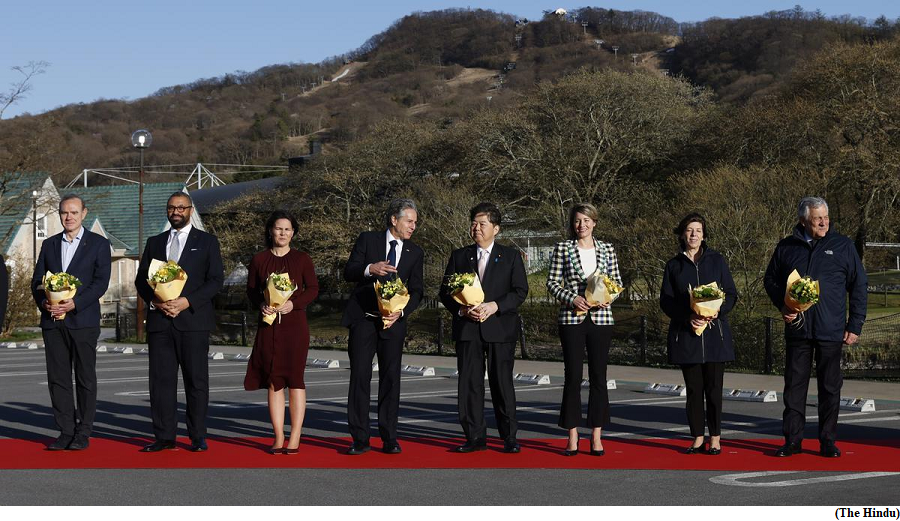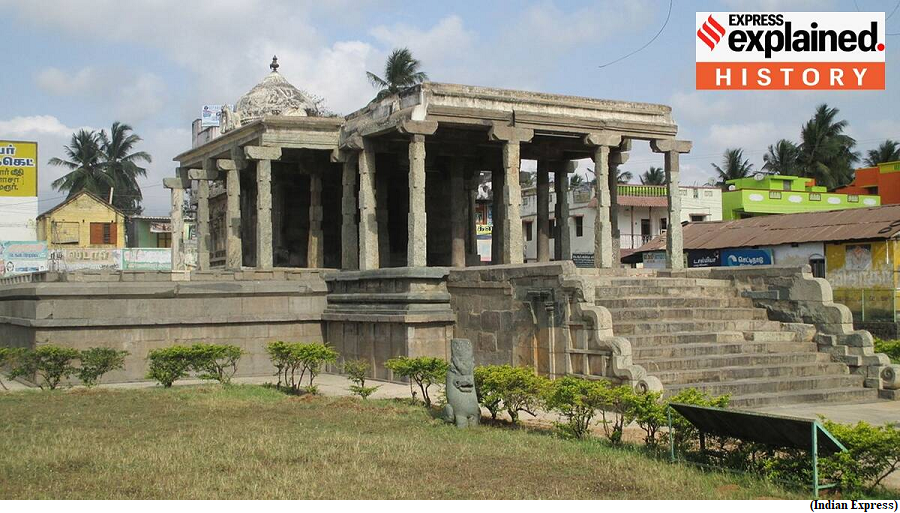Why did Twitter allegedly block access to tweets with Substack links? (GS Paper 3, Science and Tech)

Why in news?
- Recently, users of the digital newsletter platform Substack reported they could not like or retweet Twitter posts with Substack links.
- Users complained they could not add tweets to their Substack newsletter unless they were added as screenshots. Twitter also stopped returning searches for Substack on the platform.
What is Substack?
- Substack, launched in 2017, is an online publishing platform that lets writers and podcasters publish and share content directly with their target audience. The platform allows content creators to generate income directly from subscribers on their terms.
- For readers and listeners, the platform provides an easy way to access content and support individual creators based on users’ needs and preferences.
- Substack is a younger platform compared to Twitter and, in recent times, has seen a surge in popularity with a million active users in November 2021.
How is Substack connected to Twitter?
- Susbtack content creators look to social media platforms to create additional engagement with readers and listeners. It also helps them grow their audience base.
- Creators post links on Twitter, Facebook, and other prominent social media for interested users to subscribe to and follow posts regularly.
- These links are used to redirect users to content published on Substack, driving online traffic toward the original content published on the platform.
Why did Twitter block its links?
- Though their business models differ, Twitter has been trying hard to get more subscribers to its own Blue subscription since its launch in November 2022. And the platform is expected to witness a drop in its monthly active user to around 335 million users in 2024.
- This comes at a time when Twitter’s revenue from top advertisers has fallen sharply in recent months following its takeover by Elon Musk. In March 2023, Twitter reportedly witnessed a drop of 40% year-over-year in both revenue and adjusted earnings for December 2022.
- The platform also saw a decline of 71% in advertising during December 2022.
- It seems that Twitter does not want users to migrate to other platforms through links shared via tweets or retweets. It wants to ensure users spend more time on the platform which in turn boosts its position to increase advertising revenue.
What is Substack Notes?
- Substack recently announced launch of its short-form content platform called Notes.
- The company shared that Notes will provide users with a platform to post short-form content while using recommendations to drive discovery across the platform.
- Notes will come with features for users to publish brief posts, and quotes along with reactions, images, and links. Substack says Notes will run on paid subscriptions and not ads, unlike other social media platforms.
- However, its short-form content seems to pit it as a rival to Twitter, a microblogging format, which is also actively looking to increase its paid subscriber count.
Does Twitter allow sharing links?
- While Twitter has not been against sharing links to other platforms, things seem to have changed since Elon Musk took over the company’s reins in October 2022.
- In December 2022, Twitter, in a post, said it would no longer allow users to promote their presence on other social media platforms.
- These included Facebook, Instagram, Mastodon, Truth Social, Tribel, Nostr, and Post.
- Twitter also said that while any type of cross-posting was not a violation of the policy, even from prohibited sites, it would allow paid advertisements and promotions for any of the prohibited social media platforms.
- Twitter, after facing backlash, reversed the policy within 48 hours of being implemented with an apology from the CEO. Twitter later deleted the link announcing the policy.
G-7 Ministers commit to work for carbon-free electricity by 2035
(GS Paper 2, International Organisation)
Why in news?
- Climate and Energy Ministers and envoys from G-7 countries committed to work towards ensuring carbon-free electricity production by 2035 and “accelerating” the phase- out of coal.
- This was part of an agreement by the countries at the end of a two-day conference in Sapporo, Japan, ahead of the G-7 summit in Hiroshima in May 2023.
- A proposal to have a 2030 deadline for phasing out coal was shot down as the final text gives leeway for continued investment in gas, on the grounds that it could be a stopgap against energy shortfalls.

Solar & Wind Energy:
- The participants also agreed to accelerating solar and wind energy investments to produce 1,000 gigawatt (GW) by 2030 from solar power and 150 GW of wind power from off-shore platforms.
- This would be in line with recent reports by the Intergovernmental Panel on Climate Change (IPCC) that repeat the need to ensure that global temperatures not increase by more than 1.5 degrees Celsius of pre-industrial levels by the end of the century.
Assistance by developed countries:
- India had said that developing countries too needed finance, technology and assistance from developed countries for transitioning away from fossil fuels.
- Reaching targets on carbon neutrality and increased ambition “will not fly” unless they were made keeping principles of equity and climate justice at their centre.
India’s participation:
- India’s Union Environment Minister had also participated in the summit with India being invited as a ‘guest’, in the context of its presidency of the G-20.
- At the United Nations-Conference of Parties (COP) meeting in Glasgow in 2021, India had objected to language in the agreement to “phase out” and pushed instead for a “phase down” of coal.
- At the COP meeting in Sharm el Sheikh in 2022, India pushed for a proposal to phase out all fossil fuel sources, including coal and gas.
- India and China are significantly dependent on coal for electricity, whereas several developed countries, including the United States, Japan, Canada and Europe, are reliant on gas reserves. The latter however did not find mention in the final text of the Sharm el Sheikh agreement.
About G7:
- Group of Seven (G7) is an intergovernmental organisation that was formed in 1975.
- The G7 countries are the UK, Canada, France, Germany, Italy, Japan and the US.
- The bloc meets annually to discuss issues of common interest like global economic governance, international security and energy policy.
- The G7 does not have a formal charter or a secretariat. The presidency, which rotates among member countries each year, is in charge of setting the agenda. Sherpas, ministers and envoys hammer out policy initiatives before the summit.
What the Uttaramerur inscription, recently referred to by PM Modi
(GS Paper 1, Culture)
Why in news?
- Recently, the Prime Minister Narendra referred to the Uttaramerur inscription in Kanchipuram, Tamil Nadu, while discussing India’s democratic history.

Details:
- While Uttaramerur has multiple inscriptions spanning centuries, the most famous one, being referred to by PM is from the reign of Parantaka I (907-953 AD).
- These provide a detailed description about the village’s self-governance and have been cited by historians and political leaders alike as evidence of India’s history of democratic functioning.
Where is Uttaramerur?
- Uttaramerur lies in present-day Kanchipuram district, approximately 90 km southeast of Chennai.
- It is known for its historic temples built during Pallava and Chola rule.
- The famous inscription from Parantaka I’s reign is found on the walls of the Vaikunda Perumal Temple.
What does the inscription say?
- The inscription gives details of the functioning of the local sabha, i.e. the village assembly. A sabha was an assembly exclusively of brahmans and had specialised committees tasked with different things.
- The Uttaramerur inscription details how members were selected, the required qualifications, their roles and responsibilities, and even the circumstances in which they could be removed.
Appointing representatives to the sabha:
Composition:
- There will be 30 wards. Everyone living in these 30 wards would assemble and select one representative for the village assembly.
Qualifications:
- These include ownership of a certain amount of land, having a house, being between the age of 35 and 70 and “knowing mantras and Brahmanas” (from the Vedic corpus).
- An exception can be made on land ownership if the person has learnt at least “one Veda and four Bhashyas”. One must also be “well-versed in business” and “virtuous”.
Disqualification:
- The inscription then lists a number of factors which disqualify someone and their family (all the relations are systematically listed) from consideration.
- These include, “not having submitted accounts” while previously serving in a committee, committing any of the first four of the five ‘great sins’ (killing a brahman, drinking alcohol, theft and adultery), being associated with outcastes, and eating ‘forbidden’ dishes.
Election:
- All those eligible and willing would write their names on palm leaf tickets following which, the representative would be chosen on the basis of an elaborate draw of lots, conducted by priests in the inner hall of the building where the assembly meets.
Committees:
- The inscription describes a number of important committees within the sabha with their own distinct functions.
- These include, the garden committee, the tank committee, the annual committee (an executive committee which required prior experience and knowledge to be a part of), the committee for supervision of justice (for supervising appointments and wrong doing), the gold committee (in charge of all the gold in the village temple) and the five-fold committee (its role is unclear in the inscription).
- These committee assignments would last for 360 days after which the members would have to retire.
- Anyone in the committee who was implicated in any wrongdoing, such as forgery or having ridden an donkey (i.e. being punished for a crime), was removed instantly.
- Also, the inscription emphasises upon the keeping of accounts – any discrepancy can also disqualify members of the sabha.
Is this an example of a democracy?
- While the Uttaramerur inscription gives details of local self-governance, on closer inspection, it is far from a truly democratic system.
- Not only does it restrict sabha membership to a tiny subsection of land-owning brahmans, it also does not have true elections. Rather, it chooses members from the eligible pool of candidates through a draw of lots.
- That being said, this does not mean that this inscription should not be cited as a precedent for democratic functioning. The idea of a democracy, as understood today, is a fairly recent phenomenon.
- The United States, often hailed as the epitome of a liberal democracy, only gave universal adult franchise to its population in 1965.
Conclusion:
- What the Uttaramerur inscription details is a system of local self-government, outside the direct authority of the king. Furthermore, for all intents and purposes, the inscription is like a constitution – it describes both the responsibilities of members of the sabha as well as the limitations to the authority of these members.
- If the rule of law (rather than rule by personal diktat) is an essential component of a democracy, the Uttaramerur inscription describes a system of government which follows just that.




